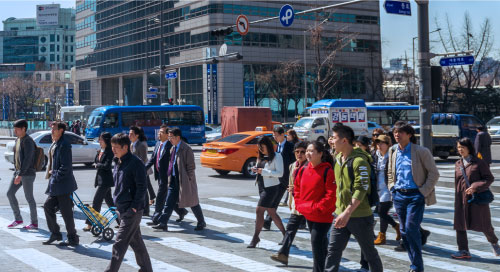Fill form to unlock content
Error - something went wrong!
Your content is just a step away. Please submit below.
Thank you!
Smart City Software Suite for Urban Management

Cities across the globe grapple with challenges brought on by rapid population growth. This surge has led to social and economic imbalances, resource depletion, and strained public services. Citizens increasingly are burdened by inefficient healthcare, ineffective public safety, inadequate energy and water management, and poorly managed public transport systems.
Outdated and disjointed technology exacerbates these issues, making it difficult for urban administrators to maintain effective operations and respond to the needs of their citizens. Without accurate information about hazards, environmental conditions, and the state of infrastructure, handling emergencies and planning for the future becomes a daunting task.
Innovative technologies offer a solution to these challenges. By managing services through a comprehensive AI and IoT platform, city administrators can respond to issues in real time, improve coordination and efficiency, remotely monitor and maintain infrastructure, and gain valuable insights that support better decision-making. This approach not only enhances public safety and resource management but also fosters a more balanced and sustainable urban environment.
Streamline Operations with Smart City AI
Many of the problems cities face today arise from lack of interconnected urban systems and absence of digital technologies. City departments often operate in silos, without a centralized, data-driven model to support planning, decision-making, and efficient operations. “Siloed data makes it difficult to manage complex issues and respond to emergencies,” says Vivek Sharma Panathula, Business Management Lead at Trinity Mobility, a provider of smart city platforms and applications. Collaboration is essential, not only for managing emergency responses, but for ensuring that services reach where they’re needed and resources are effectively deployed.
Trinity’s Smart City Solution addresses these challenges through a unified city digital platform powered by IoT and AI technology, along with pre-integrated applications that form the foundation of a smart city. This intelligence is built through three layers: the platform, bundled applications, and various user personas, all of which integrate city operations into a cohesive system that drives digital transformation.
The Smart City Digital Platform can seamlessly connect to any sensor, device, or application system to collect, process, store, and analyze data, helping detect anomalies and enabling proactive responses. The pre-integrated bundled applications—such as the City Operations Centre, Mobile Workforce Management System, Citizen Engagement System, Open Data Portal, and Smart City Solutions for various departments provide out-of-the-box support to kick-start and accelerate the smart city journey.
As cities expand their infrastructure by connecting it to an #IoT platform, they can manage services more efficiently and effectively. @trinity_iot via @insightdottech
Building a Smart City with AI and IoT at Scale
As cities expand their infrastructure by connecting it to an IoT platform, they can manage services more efficiently and effectively. A prime example is the new administrative capital for urban development (ACUD) near Cairo, Egypt, where Trinity, in partnership with master systems integrator Honeywell, is rolling out its Smart City Software Suite for the capital to manage a wide range of services for more than 6 million people.
“ACUD selected Honeywell for developing an integrated Command and Control Center (CCC) to coordinate field-level sensors with departmental data,” explains Panathula. The city aims to streamline operations, enhance sustainability, and improve citizen services through this massive project.
Using Trinity’s platform, city administrators can optimize emergency response, monitor essential services like electricity and water, and ensure efficient resource management. The platform also allows departments to track their fleets and monitor drivers’ behaviors, while providing tools for citizens to interact directly with city services. Through a mobile app, residents can report issues, set up services, and pay fines, fostering a more engaged and responsive city government.
By analyzing data from these interactions and citizen feedback, the city can continuously improve its operations and policies, ensuring that the smart city evolves in line with the needs and expectations of its residents.
To manage large volumes of sensor data, a municipal IoT system must be fast and efficient. The Trinity platform uses high-performance Intel® Xeon® processors to analyze sensor data in near-real time and deliver quick responses. The Intel® OpenVINO™ toolkit eases the development of AI and IoT applications, while Intel® Software Guard Extensions (Intel® SGX) work behind the scenes to keep citizens’ personal information private and secure.
Digital Twins and Future Innovation
As cities embrace more connected services, IoT technology rapidly advances. For instance, Trinity is developing a digital twin platform to enhance the Misk City project in Riyadh, Saudi Arabia. This platform will enable designers, engineers, and construction teams—whether on-site or remote—to collaborate in real time using functional 3D models of the development. Once completed, the digital twin will continue to provide value by optimizing emergency response, guiding first responders to critical locations, and ensuring the safety of workers in case of an incident. It’s just one of many applications gaining traction as IoT solutions catch on throughout the world, says Panathula. Could the next smart city be your own?
This article was edited by Georganne Benesch, Editorial Director for insight.tech.